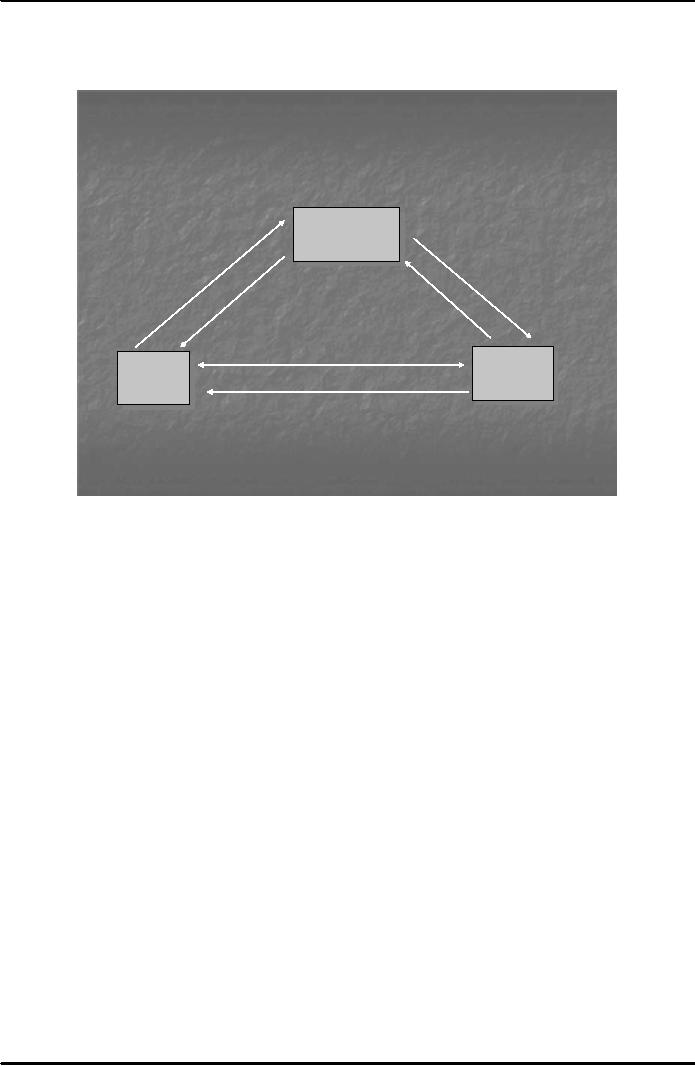 |
E-CASH PAYMENT SYSTEM 1 |
| << VIRTUAL PIN PAYMENT SYSTEM |
| E-CASH PAYMENT SYSTEM 2 >> |

E-COMMERCE
IT430
VU
Lesson
26
E-CASH
PAYMENT SYSTEM
A
company, DigiCash, has pioneered the
use of electronic cash or e-cash.
Anonymity of the buyer is the key
feature
of this system. There are three
participants in it, namely, buyer,
merchant and bank. Both,
symmetric
and
asymmetric type of cryptography is used in this
system.
Buyers
and merchants, both, have
accounts in the E-cash bank. Buyers
withdraw coins against
their
account
and store them in e-cash wallet
software (Cyber wallet) on their
computer. Cyber wallet stores
and
manages
coins and records every
transaction. Merchant forwards coins to
e-cash bank which ensures
that
these
have not already been
spent and credits the
account of the merchant.
E-cash
Coins
The
currency used in this payment
system is called an e-cash
coin or simply coin. A coin
consists of three
elements
or parts - serial #, key version
and serial no. signed by the
secret or private key of a
certain
denomination
of the e-cash bank. In other words, a
coin of one dollar would
consist of the following:
Coin =
Serial#, keyversion, {Serial #}SK bank's $1
key
Each
coin has a unique value,
partly minted by the client
and partly by the e-cash
bank.
Minting
of the coin
A long
serial no. is randomly
generated by the client's Cyber wallet in
order to mint a coin. This
serial no. is
blinded,
which means that it is
multiplied with a blinding
factor "r" and sent to the
e-cash bank for
signatures.
Thus, the e-cash bank cannot see the
serial no. it is signing.
Key version (corresponding public
key of
the bank) is also part of the coin, and
is sent usually at the time of account
opening. An e-cash bank
may
have 1 dollar signature, 5
dollar signature or 10 dollar
signature etc. If the client
wants to mint a coin
of
2
dollars then e-cash bank
would use its private or
secret key of 2 dollars to
sign the serial no.
How
bank signs blindly?
Cyberwallet
generates a serial # and a
blinding factor `r'. This
blinding factor "r" is only
known to the client.
It is
used in the following mathematical
expression which is sent to the bank
for signatures.
Serial
# . re2 (mod m)
Public
key of the bank consists of modulus
`m' and a no. `e'. Bank
signs with its secret
key of 2 dollars (d2)
such
that:
(Serial
#. re2)d2(mod
m)=Serial#d2.re2d2(mod m)
(Serial
#. re2)d2(mod
m)=Serial#d2.r(mod
m)
The
product of e2 and d2 cancel
out each other due the
property of inverse relationship of keys.
Bank
cannot see
serial # it is signing since it
does not know `r'.
The expression "Serial#d2.r(mod m)" is sent
back
by the bank to the
client, who divides it with "r" to get
the third part of a valid 2
dollar coin as
follows:
Serail#d2.r(mod m)/r=Serial#d2(mod
m)
Thus,
minting of a 2 dollar coin is
completed. In a similar fashion one
can withdraw or mint coins
of
different
denominations. E-cash bank signs the
serial nos. and debits the
account of the client. A client
must
maintain
his account with the bank.
So, if a client has $ 50 in
his account with the e-cash
bank and requests
for
the coins of a total value of $
10, the amount left in his
account after bank's signatures on the
serial nos.
would
be $ 40.
116

E-COMMERCE
IT430
VU
Working
of the E-cash
model
Fig.
1 below shows the e-cash
model:
E-cash
Model
� signs
coins
� user
accounts
�
database
EccashBaank
E ash
B
nk
Withdraw/
Deposit
Valid
indication
coins
New
Coins,
Validate
statement
+deposit
coins
Pay
coins
Meerchant
M rchant
Clileent
C i nt
Softtware
Sofware
Waalleet
Wl lt
Goods,
Receipt
� sells
items
� stores
coins
� accepts
payments
� makes
payments
� makes
payments
� accepts
payments
Fig.
1
Client
wallet or cyber wallet can generate
serial nos., store coins,
make and accept payments. It
can
withdraw
(get the coins minted) from
the e-cash bank, and deposit coins at the
payment stage to the bank.
E-cash
bank can issue new coins
and send account statement
to the client. On the merchant side,
there is
special
merchant software. Thus, a
merchant can sell items,
accept payments from clients
and also make
payments.
E-cash bank signs the serial
nos., maintains accounts of the
client and the merchant and
also
maintains
a database in which the serial
nos. of all such coins
sent for payment are
recorded. The client
makes
the payment to the merchant for the
items bought. The payment is
made through e-cash coins.
Note
that
these coins are earlier
got minted with the help of
e-cash bank and remain
stored in the cyber wallet.
The
coins are encrypted with the
public key of the bank and
are forwarded to the merchant for
onwards
deposit
to the bank. The merchant cannot,
therefore, view these coins.
E-cash bank decrypts the
coins
using
its corresponding private key
and compares the serial nos.
, thus revealed, with its
database of spent
coins
to check the validity of the coins. If a
revealed serial no. is not
contained in the database, it proves
that
the
coin is valid and unspent.
The bank then sends the
valid indication to the merchant
and adds that
particular
serial no. in its database
to prevent any chance of its
being consumed in the future. The
merchant
then
sends the goods and receipt
of payment to the client.
117
Table of Contents:
- E-COMMERCE
- WHAT IS A NETWORK
- HOW MANY CLASS A, B, C NETWORKS AND HOSTS ARE POSSIBLE
- NETWORKING DEVICES
- BASICS OF HTML 1
- BASICS OF HTML 2
- TEXT BOXES, CHECK BOXES, RADIO BUTTONS
- FRAMES AND IMAGES IN HTML
- TAG ATTRIBUTES, SOUNDS FILES, ANIMATIONS
- STYLE SHEETS 1
- STYLE SHEETS 2
- SOME USEFUL STYLE SHEETS PROPERTIES
- JAVA SCRIPTING 1
- JAVA SCRIPTING 2
- JAVA SCRIPTING 3
- JAVA SCRIPTING AND XML
- CLIENT AND SERVER SIDE PROCESSING OF DATA
- APPLETS, CGI SCRIPTS
- MAINTAINING STATE IN A STATELESS SYSTEM
- INTEGRATION WITH ERP SYSTEMS
- FIREWALLS
- CRYPTOGRAPHY
- HASH FUNCTION AND MESSAGE DIGEST
- SYMMETRIC KEY ALGORITHMS
- VIRTUAL PIN PAYMENT SYSTEM
- E-CASH PAYMENT SYSTEM 1
- E-CASH PAYMENT SYSTEM 2
- SECURE SOCKET LAYER (SSL)
- E-BUSINESS: DISADVANTAGES OF E-BUSINESS
- E-BUSINESS REVENUE MODELS
- E-MAIL MARKETING
- CUSTOMER RELATIONSHIP MANAGEMENT (CRM)
- META INFORMATION
- DATA MINING
- CONFIDENCE AND SUPPORT
- ELECTRONIC DATA INTERCHANGE (EDI)
- PERSONAL FINANCE ONLINE
- SUPPLY CHAIN
- PORTER’S MODEL OF COMPETITIVE RIVALRY
- BARRIERS TO INTERNATIONAL E-COMMERCE
- ELECTRONIC TRANSACTIONS ORDINANCE, 2002 - 1
- ELECTRONIC TRANSACTIONS ORDINANCE, 2002 - 2
- ELECTRONIC TRANSACTIONS ORDINANCE, 2002 - 3
- GLOBAL LEGAL ISSUES OF E-COMMERCE - 1
- GLOBAL LEGAL ISSUES OF E-COMMERCE - 2